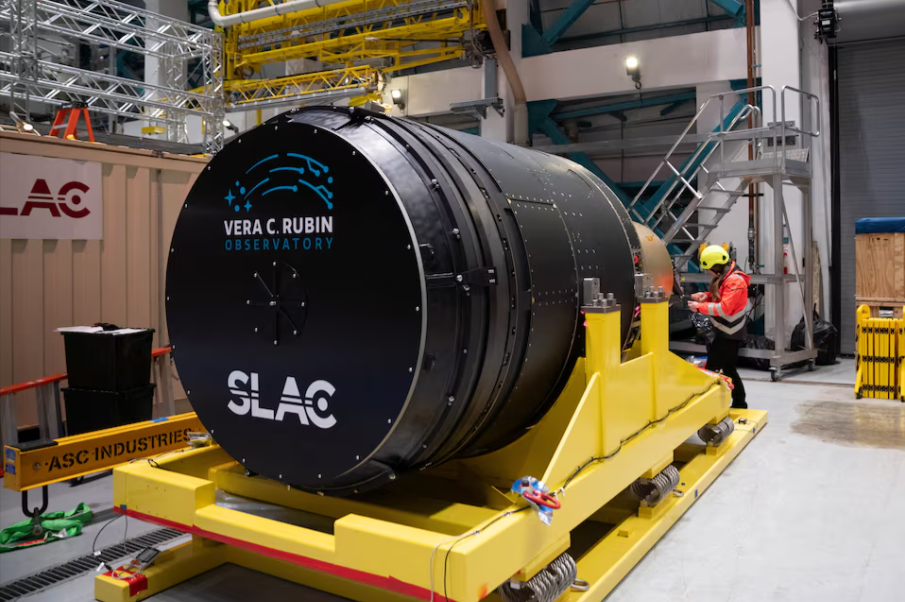
©Olivier Bonin/SLAC National Accelerator Laboratory/Handout via REUTERS
Pre-reading questions:
- What comes to mind when you think about astronomical research and exploration?
- What challenges do you imagine scientists might face when trying to gather and analyze huge amounts of data from space?
Vocabulary:
- telescope /TEL-uh-skohp/
- vast /vast/
- objective /uhb-JEK-tiv/
- majority /muh-JAWR-i-tee/
- curiosity /kyoor-ee-OS-i-tee/
[noun] – a cylinder-shaped device for making objects that are far away look closer and larger, using a combination of lenses, or lenses and curved mirrors
The astronomer peered through the telescope to observe the distant stars and planets with remarkable clarity.
[adjective] – extremely big
The library housed a vast collection of books, covering every imaginable subject.
[noun] – something that you plan to do or achieve
Her main objective for the year was to complete her master’s degree with honors.
[noun] – the larger number or part of something
The majority of the voters supported the new policy, leading to its swift implementation.
[noun] – the innate desire or drive within humans to learn, discover, and understand new things
Her curiosity about ancient civilizations led her to pursue a career in archaeology.
Article reading:
At the heart of this project is the integration of a cutting-edge telescope with an advanced data processing system. Capable of handling around 20 terabytes of data every night, the system is expected to gather a vast database totaling 15 petabytes throughout its mission. The primary objective of this ambitious endeavor is to shed light on dark energy and dark matter, which constitute the majority of the universe yet remain largely enigmatic. Additionally, the observatory will monitor celestial events, including potential asteroid impacts and the behaviors of nearby stars and planets. This mission, led by the AURA consortium and overseen by Stuartt Corder, symbolizes the fusion of state-of-the-art technology and innate human curiosity in exploring the mysteries of the cosmos.
Comprehension questions
- Where is the Vera C. Rubin Observatory located?
- How much data can the advanced data processing system handle each night?
- What is the primary objective of the observatory’s mission?
- Who is leading the mission of the Vera C. Rubin Observatory?
- What is the significance of the digital camera being installed at the observatory?
Discussion questions
- Have you ever visited an observatory or participated in stargazing activities? If so, what was the most fascinating thing you observed? If not, would you be interested in visiting an observatory or engaging in stargazing in the future?
- Have you ever encountered any information or discussions about dark energy and dark matter in your science classes or personal readings? If so, what intrigued you the most about these concepts? If not, would you like to learn more about dark energy and dark matter, given their significance in our understanding of the universe?
- Do you agree that the exploration of dark energy and dark matter should be a priority in astronomical research?
- Considering the vast amount of data the observatory will collect, how do you think scientists will manage and analyze this information effectively? What challenges might they encounter in processing such massive datasets?
- What other areas of research do you think are equally important in understanding the universe?